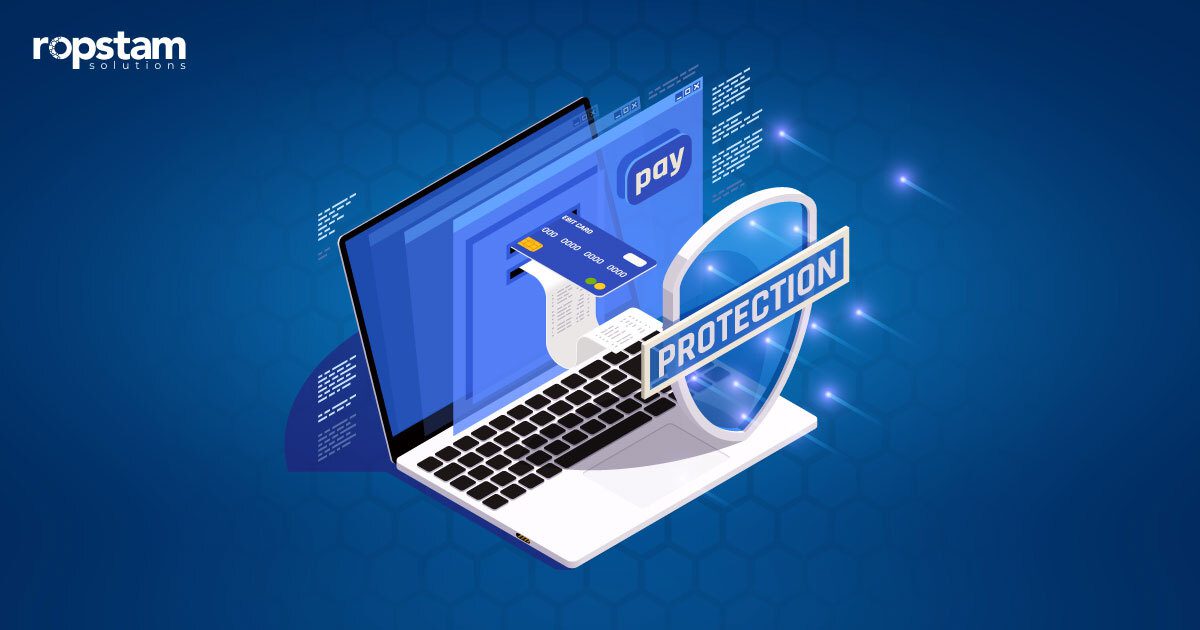In the last few decades, the ecommerce industry has grown rapidly, becoming a multi-million-dollar venture. It is estimated that global online shopping sales will exceed $6.4 trillion by the end of fiscal year 2024. The increased popularity of e-commerce sales has, however, also resulted in cybercriminals taking advantage of vulnerable platforms to target naïve customers.
From triangulation fraud to account takeover, there are a host of ecommerce frauds meticulously undertaken to defraud customers. As the number of ecommerce sites grows, defending against such crimes becomes a major challenge in themselves.
If you are seeking guidance to identify the best practices to defend against ecommerce fraud, you have come to the right place. From the intricate definition of ecommerce fraud to the strategies needed to safeguard your online store, this article covers all the major aspects in this domain.
What is ecommerce fraud?
E-commerce fraud is a common type of cyberattack that refers to deceptive or criminal activities that occur during online transactions. It involves attempts to unlawfully obtain goods, services, or funds through fraudulent means in the e-commerce space.
Fraudulent practices of such a heinous nature can be initiated by individuals, organized groups, or cybercriminals with the intention of exploiting vulnerabilities within e-commerce systems. Commonly, fraudulent activities in e-commerce include credit card fraud, identity theft, account takeover, and friendly fraud.
With the e-commerce industry on the rise and cybercriminals getting more intelligent, it is of paramount importance to identify different types of ecommerce frauds targeting online businesses.
Types of ecommerce fraud to avoid
Ecommerce fraud comes in various forms, often evolving in sophistication alongside technological advancements. Understanding these different types of fraud is crucial for implementing effective prevention strategies within your online business.
1) Payment fraud
Payment fraud encompasses a wide array of deceptive practices, including stolen credit card information, unauthorized transactions, and payment reversals. This type of fraud occurs when fraudsters use stolen or fake credit card details to make purchases on ecommerce platforms. Card-not-present (CNP) transactions are particularly susceptible to this type of fraud, as the physical absence of the card makes verification more challenging.
2) Account takeover (ATO)
Account takeover occurs when a fraudster gains unauthorized access to a customer’s account. They achieve this by stealing login credentials through various means, including phishing, social engineering, or through data breaches on other platforms. Once inside, the fraudster can make purchases, change account details, or use accumulated loyalty points or rewards.
3) Return fraud
Return fraud involves exploiting a store’s return policy for personal gain. Fraudsters might return stolen or counterfeit items for refunds or store credit, or they might exploit loopholes in the return process to keep the product and get a refund simultaneously. This type of fraud can significantly impact an ecommerce store’s revenue and inventory management.
4) Phishing and Spoofing
Phishing and spoofing are tactics used to deceive customers or even employees into revealing sensitive information. Categorized as types of social engineering attacks, fraudsters create fake websites or emails that resemble legitimate ones, tricking individuals into providing personal data, login credentials, or financial information.
It is pertinent to mention that unwary and non-techy-savvy consumers might unwittingly share their details, leading to subsequent fraud attempts.
5) Friendly fraud
Friendly fraud occurs when a customer makes a purchase and then falsely claims that the transaction was unauthorized or disputes the charge after receiving the product or service. This type of fraud is particularly challenging to identify because it involves legitimate customers exploiting the chargeback process.
6) Account creation fraud
Fraudsters create fake accounts using stolen or synthetic identities to exploit promotional offers, steal personal information, or carry out fraudulent activities. These accounts can be used to make purchases, exhaust-free trial periods, or access exclusive offers reserved for new customers.
Best strategies and practices to combat ecommerce fraud
Ecommerce businesses face a constant battle against a range of fraudulent activities that can significantly impact revenue, reputation, and customer trust. When making an ecommerce website or setting up a store, employing a robust set of strategies and best practices is crucial to safeguard against potential threats. Here are some effective measures to combat ecommerce fraud:

1) Implement multi-layered fraud screening:
Implement multi-layered fraud screening by combining different techniques like device fingerprinting, IP address analysis, proxy detection, behavioral monitoring, blacklists, location analysis, and more. Using this defense-in-depth approach produces a stringent fraud screening framework.
2) Leverage AI and machine learning:
Advanced AI algorithms that learn and improve over time are pivotal for detecting emerging fraud patterns across massive volumes of order data that humans can’t analyze. AI and machine learning algorithms can automatically identify signals and patterns indicative of fraud by reviewing millions of transactions and interactions. Their self-learning capabilities improve detection rates over time as new fraud tactics emerge.
3) Require strong passwords:
Enforce requirements for minimum password length, complexity, expiration, and frequent rotation. This significantly reduces the risk of attackers cracking user passwords through brute force to gain unauthorized account access.
4) Use multi-factor authentication:
To further strengthen the security of your ecommerce store, enforce additional steps like SMS, OTP, or biometric scans to verify user identity beyond just passwords to prevent account takeovers. This could include one-time passcodes through SMS or biometrics like fingerprint scanning or facial recognition to confirm users’ identities.
5) Block VPNs and TOR networks:
Geo-blocking requests from anonymity networks prevent untraceable fraudulent account creation and transactions. However, you must ensure that legitimate users aren’t blocked.
6) Limit payment channels:
Limit payment channels by disabling support for checks, wire transfers, and other risky payment modes prone to chargebacks and fraud in favor of trusted providers like PayPal. This act reduces the surface area for fraudulent payments.
7) Use address verification:
Providing the wrong address and claiming a refund is another common tactic swindlers use. Try to validate billing and shipping addresses against credit card registered addresses and postal databases to spot mismatches signaling fraud.
8) Set transaction velocity limits:
An irregularly large number of transactions simultaneously is generally a red flag. It would help if you established maximum transaction thresholds for a specific time frame. Unusual spikes in the number of transactions within a short period can be an indicator of fraudulent activities.
9) Deploy CAPTCHAs:
CAPTCHAs during account signup and checkout add friction for bots creating fake accounts or bulk orders. But avoid obstructing actual customers.
10) Restrict accounts:
Curb account creation from high-risk sources like TOR exit nodes, remote servers, disposable email services, and previous abuser domains.
11) Ensure secure card payments:
The checkout process involves financial transactions dealing with extremely sensitive customer data. Therefore, you should adopt optimizations like 3D Secure for card transactions to include issuer authentication for better fraud protection.
12) Monitor high-risk orders manually:
Flag high-risk orders based on predefined criteria and subject them to manual review. This allows for closer scrutiny before approval or fulfillment.
13) Enable real-time fraud alerts:
Implement real-time fraud alerts to notify both customers and the business of potentially fraudulent activities as they occur.
14) Educate staff and customers:
It’s an undeniable fact that humans are the weakest link in cybersecurity. Therefore, additional effort should be put into the process of employee education. Train employees to recognize and respond to potential fraud indicators. Additionally, educate customers about secure practices and how to identify phishing attempts or suspicious transactions.
15) Regularly review and update policies:
As new fraud patterns emerge, it’s important for an e-commerce store owner to stay one step ahead of the attackers. You should periodically review and update your anti-fraud policies, adapting them to new trends and threats in the ecommerce landscape.
Best ecommerce fraud prevention softwares
Selecting the right fraud prevention software is extremely critical for ecommerce businesses aiming to secure their platforms and protect their customers from potential fraudulent activities. Here are five top-notch ecommerce fraud prevention software solutions:
1) Kount
Kount is a robust fraud prevention solution that employs AI-driven analytics to identify and prevent fraudulent transactions. It offers real-time monitoring and analysis of customer behavior, enabling businesses to make informed decisions.
Some of Kount’s rich features include device fingerprinting, proxy piercing, and machine learning algorithms that adapt to evolving fraud patterns. It integrates easily with various ecommerce platforms, providing an effective and seamless anti-fraud and security solution.
2) Signifyd
Signifyd is a comprehensive fraud prevention platform designed to protect ecommerce businesses from various forms of fraud, including chargebacks, account takeovers, and payment fraud.
Utilizing a combination of machine learning, manual review, and a vast database of global transactions, Signifyd aims to accurately differentiate between genuine and fraudulent orders. Furthermore, It offers real-time decisions, enabling merchants to accept orders confidently while mitigating risks.
3) ClearSale
ClearSale is an ecommerce fraud prevention solution that combines advanced statistical modeling with a manual review process. It provides real-time order analysis to identify potentially fraudulent activities.
ClearSale’s user-friendly solution is designed to minimize false declines, ensuring that legitimate orders are not wrongly flagged as fraudulent. With a team of experienced fraud analysts and proprietary technology, ClearSale offers a comprehensive approach to fraud protection for ecommerce businesses.
4) Forter
Forter is an AI-powered fraud prevention platform that specializes in protecting merchants against various types of fraud, such as payment fraud, account takeover, and policy abuse.
This advanced tool’s real-time decision-making capabilities leverage behavioral analytics and machine learning to identify fraudulent patterns and behaviors. Forter’s solution focuses on providing frictionless transactions for genuine customers while effectively preventing fraudulent activities.
5) Riskified
Riskified is a fraud prevention tool specifically designed for ecommerce merchants. It uses machine learning algorithms to assess the risk associated with transactions in real time.
This unique platform offers an automated solution to approve or decline transactions based on fraud risk analysis, reducing false declines and enhancing the overall customer experience. It provides insights into customer behavior, enabling businesses to make informed decisions about transactions.
Get Ecommerce Development Services from Ropstam Solutions
With the ever-increasing trend of online shopping, ecommerce stores are set to rule the rooster in the near future. However, it is also extremely crucial to stay vigilant and be informed when it comes to dynamic fraud patterns in order to prevent e-commerce fraud of any type.
At Ropstam Solutions, we have a dedicated team of expert ecommerce developers. With more than a decade of experience in the field of Shopify development, Ropstam has made a name for itself in this domain. Over the years, we have delivered a handful of ecommerce projects to our satisfied clients. If you are interested in availing of our services, contact us now:













